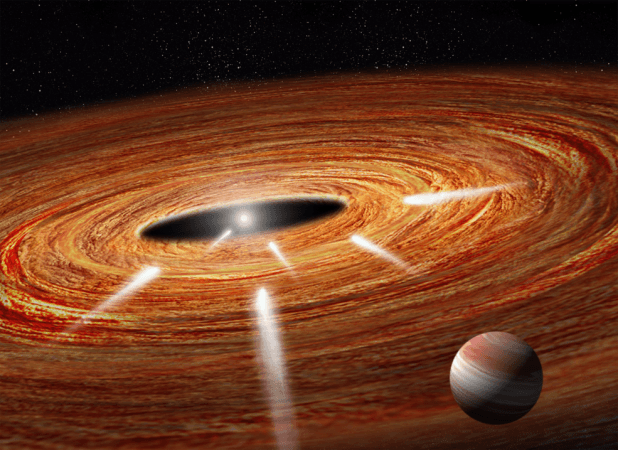
NASA's Hubble Space Telescope has observed comets plunging into a star -- HD 172555. This star is located 95-light years away from Earth and is estimated to be 23-million-years old.
Also Read: New extremely rare double-ringed galaxy discovered by researchers
While the exocomets -- comets that exist outside our solar system -- were not directly visible around the star, their plumes were detected, pointing to icy nuclei, that hinted towards their presence.
These comets were detected by scientists in the third extrasolar system, represented by the star HD 172555. These systems are found to be less than 40 million years old.
The discovery of these doomed comets in the system indirectly points towards a "gravitational stirring" by an undetected planet, estimated to be Jupiter-sized.
This planet's gravity is believed to slingshot these comets into the star. Scientists believe that as the star is young, it could shed light on what the early part of our own soalr system was like.
They believe that icy comets sent off their orbits by gravitational anomalies could have also hit Earth and the other inner planets, bringing with them large amounts of water and organics.
Our solar system has witnessed a number of these "sun-grazing objects" that eventually burn up as they come too close to the star.
"Seeing these sun-grazing comets in our solar system and in three extrasolar systems means that this activity may be common in young star systems," study leader Carol Grady of Eureka Scientific Inc. in Oakland, California, and NASA's Goddard Spaceflight Center was quoted as saying in a NASA release.
"This activity at its peak represents a star's active teenage years. Watching these events gives us insight into what probably went on in the early days of our solar system, when comets were pelting the inner solar system bodies, including Earth. In fact, these star-grazing comets may make life possible, because they carry water and other life-forming elements, such as carbon, to terrestrial planets," Grady added.
The findings were presented by Grady and her team on January 6, 2017, at a meeting held in the American Astronomical Society in Grapevine, Texas, US.
The star is part of the Beta Pictoris Moving Group, a cluster of stars born from the same nebula or star nursery. The debris disk that surrounds the star, is evidence of the number of infalling objects, says scientists.
This stellar group's proximity to Earth makes it easier to study. At least 37.5 per cent of the massive stars in the Moving Group have already been sirectly imaged, like 51 Eridani b in the 51 Eridani system. According to Grady, the Moving Group is about the age when it should start creating terrestrial planets.
The star HD 172555 was first analysed by French researchers from archival data accumulated between 2004 and 2011 by the European Southern Observatory's (ESO's) High Accuracy Radial velocity Planet Searcher (HARPS), which is a planet-finding spectrograph.
The presence of calcium was found in the spectrum of star HD 172555 by the HARPS spectrograph, which pointed towards infalling comets.
In 2015, the Hubble's Space Telescope Imaging Spectrograph (STIS) and the Cosmic Origins Spectrograph (COS) were used by Grady's team to carry out spectrographic analysis in UV light, which allows Hubble to detect the presence of elements.
Over a span of sic days Hubble detected the presence of carbon gas and silicon. The gas was found to be moving at around 360,000 miles per hour across the face of the star.
"As transiting features go, this vaporized material is easy to see because it contains very large structures," Grady said.
"This is in marked contrast to trying to find a small transiting exoplanet, where you're looking for tiny dips in the star's light," she added further.
The researchers now plan to conduct follow-up tests looking for oxygen and hydrogen in order to confirm that the objects being observed are indeed comets.
"Hubble shows that these star-grazers look and move like comets, but until we determine their composition, we cannot confirm they are comets," Grady was quotes as saying in a NASA statement.
"We need additional data to establish whether our star-grazers are icy like comets or more rocky, like asteroids."














